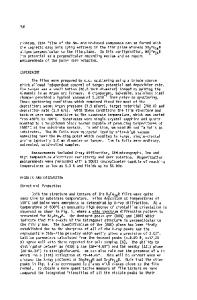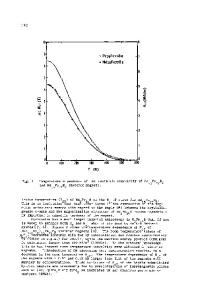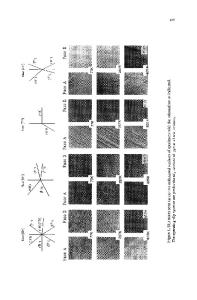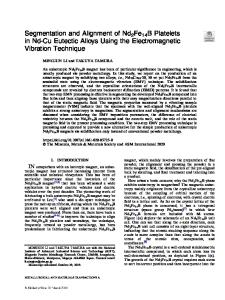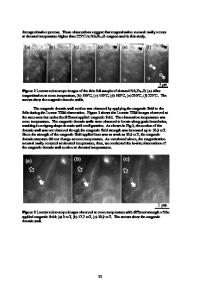Synthesis of R 2 Fe 14 B Single Crystals
- PDF / 3,675,321 Bytes
- 13 Pages / 420.48 x 639 pts Page_size
- 78 Downloads / 353 Views
SYNTHESIS OF R2 Fej B.N. DAS AND N.C. KOON Naval Research Laboratory,
4
B SINGLE CRYSTALS
Washington, DC
20375-5000
ABSTRACT Single crystals of R2 Fe 1 4 B weighing 5 to 15 g were grown from a liquid The arc method was used melt by tri-arc and levitation Czochralski methods. for the growth of smaller size crystals from 5 to 7 g, and the levitation Crystals method was used for the growth of larger sizes, from 10 to 15 g. of (Ri) 2 _x(R 2 )xFe1 4 B could also be grown with isomorphous replacement of The starting alloy composition for the crystal growth rare earth atoms. In this paper we process was chosen based on solidification microstructure. isomorphous replacement, seeding discuss the solidification microstructure, and crystal and their interactions with the crystal growth processes quality.
INTRODUCTION While investigating the magnetic properties of rapidly quenched rare earth-iron-boron amorphous alloys, we found that some of the crystallized [11. The magnetic alloys have interesting hard magnetic properties properties of these alloys are related to a ternary compound in rare Based on our experience with rare earth Laves earth-iron-boron system [2]. phases [3], we decided to grow single crystals of this compound by tri arc Czochralski process in order to study the magnetic properties of this material [4]. The ternary compound was established to be %Fe 14 B by Herbst, Croat, [6] investigated the powder Sagawa et al., Pinkerton and Yelon [5]. By varying the constituent metallurgical process of preparing the compound. elements of the starting material and measuring the resultant properties of starting composition, the optimum alloys, they [6] established the Givord et. al., [7] used R 15 Fe 7 7 B8 , for the powder metallurgical process. this composition to grow large grains of R2 Fe 1 4 B from melt for magnetic Recently Swets [8] grew large single crystals of Nd 2 Fe 1 4 B from experiments. Hukin crucible using RF power and a melt composition close to Nd 15 Fe 7 7 B8 but with some variation. In our crystal growth experiments, the optimum composition for crystal growth processes was obtained from a study of solidification microstructure. This paper reports the results of solidification microstructure of several rare earth alloys and shows how the optimum composition for the crystal The study of solidification microstructure growth process was established. of quaternary the crystal growth region to establish was extended The nature of the solidification microstructures also substituted alloys. provided information on crystal growth process.
EXPERIMENTAL PROCEDURES Fe-B alloys were first To prepare the starting alloy specimens, prepared by arc melting proper mixture of iron and boron under a positive The specimens were turned over on the pressure of argon, (99.995% pure). copper hearth and remelted three times to achieve complete alloying between to avoid the formation The binary Fe-B alloys were prepared first Fe and B. A proper amount of high melting rare earth borides in the ternary alloys. of rare earth wa
Data Loading...
